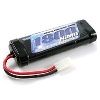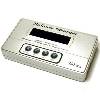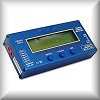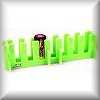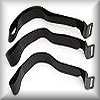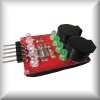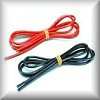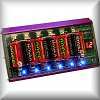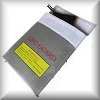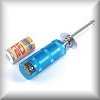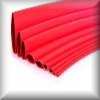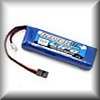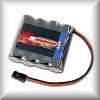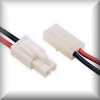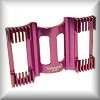Rechargeable Batteries
for RC Models
Ni-Cad (Nickel Cadmium) Batteries
Nickel Cadmium Rechargeable Batteries were developed by a Swedish Engineer, Ernst Waldemar Jungner, way back in 1899. My first stick pack Tamiya battery isn't quite that old. It was purchased in 1987, was rated at 1200Mah (Mili Amp Hours) and with a silver can 27 Turn motor, my Tamiya Boomerang would run around in the back yard for a good seven minutes before slowly coming to a stop. I then had a wait of around 16 Hours for my Trickle Charger to put back those 1200Mah.
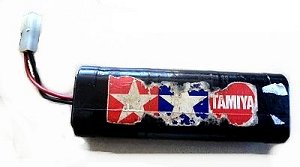 Ni-Cad development continued until around 1998 to a maximum rating of around 2000Mah and matchers, pack builders and battery technicians, were able to put together six cell packs with voltages approaching 7.4 Volts, to give those that could afford them, an edge over the rest.
Ni-Cad development continued until around 1998 to a maximum rating of around 2000Mah and matchers, pack builders and battery technicians, were able to put together six cell packs with voltages approaching 7.4 Volts, to give those that could afford them, an edge over the rest.
Ni-Cad Charging
All Ni-Cad Batteries have to be Discharged soon after use. This is to avoid the dreaded "Memory" effect that on subsequent re-charges can cause a momentary drop in performance during a race. A simple discharger can be made from a car 12v bulb.
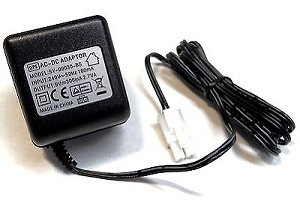 Try to time your charge to complete just before a race. This will ensure maximum punch and duration. If a Ni-Cad is left to cool after a charge this advantage dissipates.
Try to time your charge to complete just before a race. This will ensure maximum punch and duration. If a Ni-Cad is left to cool after a charge this advantage dissipates.
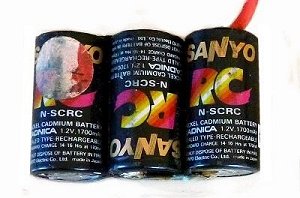 The higher the charge current, the more Punch the Ni-Cad battery will have (up to around 8 amps). However, the downside to this is a reduction in duration and effective battery life.
The higher the charge current, the more Punch the Ni-Cad battery will have (up to around 8 amps). However, the downside to this is a reduction in duration and effective battery life.
Ni-Cad Batteries should be left to cool for about an hour after use before recharging. This will increase the effective life of the battery.
Ni-Mh (Nickel Metal Hydride) Batteries
Nickel Metal Hydride Batteries were first seen in the late 1990s and by the year 2000 were available at ratings up to 3000Mah. Again, matchers and pack builders worked hard to provide the ardent racer with packs to provide that little bit of extra power and ESC manufacturers also joined the action with improved controllers to take full advantage of this new technology.
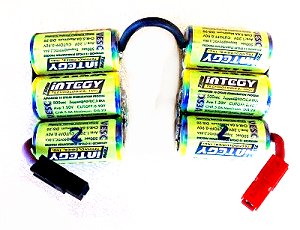 Unlike Ni-Cad batteries, with Ni-Mh batteries, the problem wasn't gearing the car to get to the end of the race, using the available battery power, but to find the brushed motor that could handle gear settings, that provided the desired speed and acceleration, without the motor overheating and wearing the commutator that much, it needed a skim after every 2 runs. My favourite brushed Motor in those days was the 9 Double.
Unlike Ni-Cad batteries, with Ni-Mh batteries, the problem wasn't gearing the car to get to the end of the race, using the available battery power, but to find the brushed motor that could handle gear settings, that provided the desired speed and acceleration, without the motor overheating and wearing the commutator that much, it needed a skim after every 2 runs. My favourite brushed Motor in those days was the 9 Double.
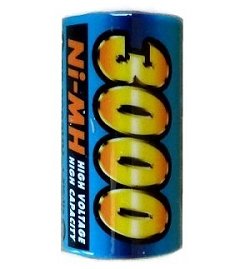
Ni-Mh Charging
Never charge Ni-Mh batteries at a current higher than 4.5 amps. Although these batteries can give a higher voltage than Ni-Cad Batteries, they are much more sensitive and easy to damage if charged too quickly.
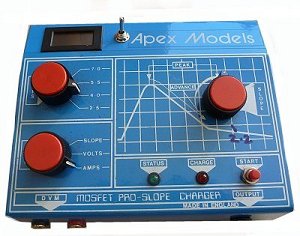 Some charging methods for Ni-Mh batteries can also be detrimental. The best I found was the "Slope" method. Avoid "Pulse" charging as this tends to affect crystal formation detrimentally (it seems to kill them off) thus reduces duration over time.
Some charging methods for Ni-Mh batteries can also be detrimental. The best I found was the "Slope" method. Avoid "Pulse" charging as this tends to affect crystal formation detrimentally (it seems to kill them off) thus reduces duration over time.
If you are using a temperature cut off charger on Ni-Mh batteries, set it to no more than 40 Degrees Centigrade. Any higher than this can damage the crystals.
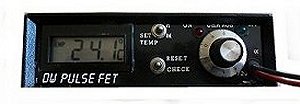 It is not necessary to discharge Ni-Mh Batteries. Unlike Ni-Cad batteries they do not develop a memory. Also, if they are totally discharged they sometimes will not charge straight afterwards and need to be coaxed with a 10 minute trickle charge.
It is not necessary to discharge Ni-Mh Batteries. Unlike Ni-Cad batteries they do not develop a memory. Also, if they are totally discharged they sometimes will not charge straight afterwards and need to be coaxed with a 10 minute trickle charge.
Ni-Mh Batteries can be recharged shortly after use without any discernable detrimental effects.
Li-Po (Lithium-Polymer) Batteries
Lithium-Polymer Batteries are a huge step forward in performance when compared with Ni-Cad and Ni-Mh batteries. However, Li-Po Batteries are much more expensive than previous battery types and have a shorter effective life of between 200 and 400 charge cycles, compared to well over 1000 charge cycles for Ni-Cad and Ni-Mh. Also, a high degree of care has to be taken when charging Li-Po batteries. They have been known to burst into flames or even explode, for this reason I do not recommend Li-Po batteries for RC beginners.
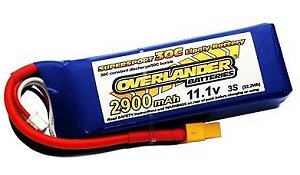 Another problem with Li-Po packs is they are physically larger, so for those with older "Vintage" models, they may not fit into the provided space for the battery on the chassis.
Another problem with Li-Po packs is they are physically larger, so for those with older "Vintage" models, they may not fit into the provided space for the battery on the chassis.
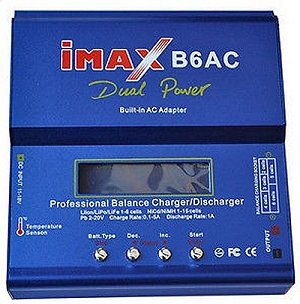 Li-Ion (Lithium-Ion) batteries were originally produced for Laptops, Ipods, Ipads, Tablets and the like and are now available for RC models. Much like Li-Po for price and charge cycle life, the power and capacity of the Li-Ion is a moderate improvement over the Li-Po, but for me, at the time this article was written, not worth the extra expense.
Li-Ion (Lithium-Ion) batteries were originally produced for Laptops, Ipods, Ipads, Tablets and the like and are now available for RC models. Much like Li-Po for price and charge cycle life, the power and capacity of the Li-Ion is a moderate improvement over the Li-Po, but for me, at the time this article was written, not worth the extra expense.
Li-Po Charging
Much care has to be taken when charging Li-Po batteries. As previously mentioned, if certain procedures are not followed, they could burst into flames or even explode, I therefore reiterate, Li-Po batteries are NOT recommended for RC beginners.
 Consider a Battery pack listed as "2S 5000Mah 40c 2C".
Consider a Battery pack listed as "2S 5000Mah 40c 2C".
"2S" is the number of cells in the pack, in this case 2 cells. Each cell provides around 3.7 Volts, so a 2S pack is around 7.4 Volts.
"5000Mah" (Mili-Amp-Hours) is the capacity. The amount of charge the pack can hold.
"40c" is the maximum Discharge rate. Which in our example would be calculated as 5000 (Mah) x 40 = 200000Ma (200 Amps).
"2C" is the maximum Charge rate. 1C being 5 Amps, so in our example 2 x 5 = 10 Amps.
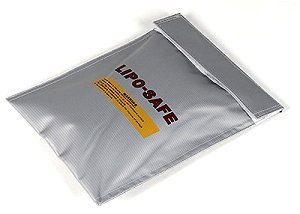 To safely charge your Li-Po Battery I would recommend a good Computerised, or Balance charger, preferably one that can handle a Charge current of around 25A and always place the charging battery on a fireproof surface.
To safely charge your Li-Po Battery I would recommend a good Computerised, or Balance charger, preferably one that can handle a Charge current of around 25A and always place the charging battery on a fireproof surface.
Finally. NEVER leave your charging Li-Po battery unattended and NEVER EVER charge it above the recommended rate. When not in use, store with around 60% charge remaining and in a fireproof box or bag.
Balancing Connectors
No two Li-Po Cells are exactly the same. Small variations between each cell can be problematic and damage the cells internally. But most importantly, if these cell variations are left unchecked, there may be a danger of fire.
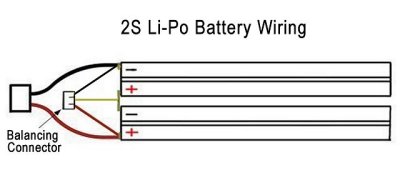 The Balance Connector, when plugged into a LiPo balancer, monitors the voltage of each individual cell and if any cell has a higher voltage than the others, it will slightly discharge that cell until they are balanced.
The Balance Connector, when plugged into a LiPo balancer, monitors the voltage of each individual cell and if any cell has a higher voltage than the others, it will slightly discharge that cell until they are balanced.
For More Tips, Advice and Setup Information, check out our RC Model Car Setup Guide.
|




